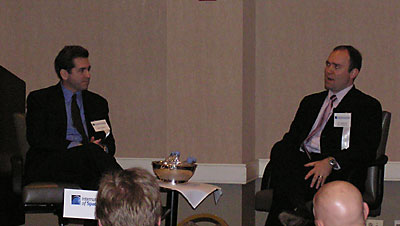Selling dreams: the promise and challenge of space tourism<< page 1: suborbital vs. orbital Industry challengesThe roller coaster of events in the last several years has underscored the wide range of issues that the nascent space tourism industry faces—and why the industry is indeed still nascent. One of the biggest challenges space tourism faces is that it is still not well understood by the general public. “They don’t really know what it means to fly to space,” Anderson said. “The vast majority of the population today has had no experience with anything space-related. One of our biggest challenges is helping people understand that you don’t need to be a military test pilot or a superhero to do these things.” The general public continues to associate space with NASA, he said. “NASA is a brand name, NASA is space,” he said. “NASA at times has been very supportive of what we’ve done, and other times they’ve been not so supportive. The extent to which NASA could be involved in space tourism remains to be seen.”
That lack of understanding by the general public poses a marketing challenge, Anderson said. “A lot of traditional marketing tactics—print advertising, television advertising, things like that—work best when the consumer already knows what the product is,” he explained. By contrast, he said, most people still don’t understand what space tourism is. “To try to advertise, to try to reach people through traditional marketing means, is almost impossible. It’s not money well spent.” Instead, he said, you have to rely on what essentially is word-of-mouth advertising. “You have to provide excellent, excellent service to the people who do buy your products. You have to let them explain it to their friends, their peers, through word of mouth.” He said that both Tito and Shuttleworth have been effective in that role. “Perhaps most importantly for future customers, they both spoken positively about the value of their experience. That is, they thought it was worth not only every penny, but a lot more. They have been great evangelists.” Space tourism does share some of the risks associated with businesses in other new industries. “If you’re starting a business in an existing industry, the biggest risk an entrepreneur has is execution risk,” Anderson said. “However, when you’re in a new industry like this, there’s technology risk: there’s a great question mark whether things can even be done. There’s also market risk: until it’s actually been demonstrated that there are 10,000 people per year who will fly, or whatever, then the real investors won’t believe it. Those extra layers of risk make it challenging to do business in a new industry.”
Another of those risks is regulatory risk. When describing suborbital spaceflight, Anderson noted that “the biggest question that the astute potential customer would ask us was, ‘Well, how will those vehicles be certified?’” He said that, until recently, he didn’t have a good answer for those people because of the uncertain regulatory environment. He did praise HR 3752, the Commercial Space Launch Amendments Act, which was passed by the House of Representatives a week before the talk, calling it “a fantastic step forward in this whole area of risk, and mitigating it.” The legislation codifies regulations governing suborbital vehicles, ensuring that they remain in the hands of the FAA’s Office of Commercial Space Transportation (AST). “The risk is gone, because now it’s a known quantity.” Anderson also praised AST, calling them far more motivated than the thousands that deal with conventional aviation. This drew an incredulous response from O’Brien, who as a private pilot has had to frequently deal with the aviation side of FAA. “Let me get this straight: there’s an entrepreneurial part of the FAA?” Fulfilling dreamsCertainly the progress made by the space tourism industry in the last several years has been uneven, and arguably at a slower pace than what its advocates had hoped for. Anderson said the industry in general, including Space Adventures, has made some mistakes and lost some opportunities along the way. Alluding to the Lance Bass case in 2002, he said that “had it happened well, it would have been good for everybody,” even though the flight was being organized by a competing firm, MirCorp. “In some senses it made other ‘rock stars’ not want to do it, because it soured the water for a little while. When opportunities are there you have to grab them and make use of them for the benefit of the industry.” Despite these obstacles, interest in space tourism has kept companies like Space Adventures moving ahead. Anderson said the company had made a profit—although not “big” profits—in the last three years, and its revenues have been growing every year. “We want to continue to provide excellent service to our customers, we want to continue to be at the forefront of new developments, and we certainly want to continue to sell orbital flights on the Soyuz.” In the end, though, Anderson said that his company really isn’t selling suborbital jaunts or orbital journeys. “What Space Adventures is really selling is the fulfillment of a dream. It really isn’t even space, because most people can’t yet visualize what exactly that means. It will take thousands, tens of thousands of people, to help people really understand what that means.” Home |
|
